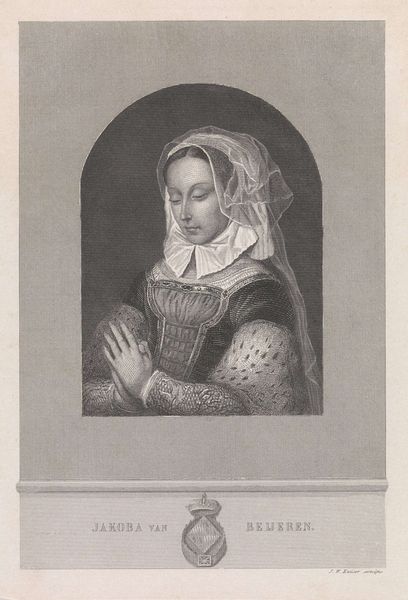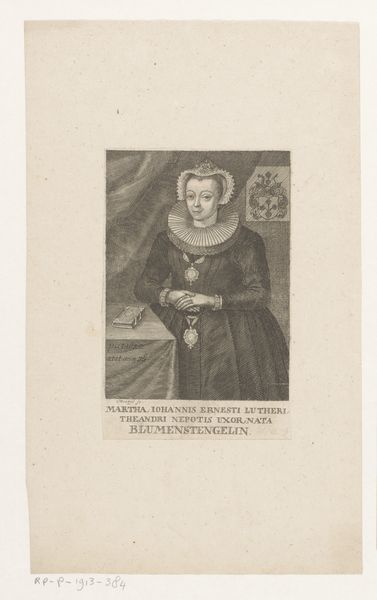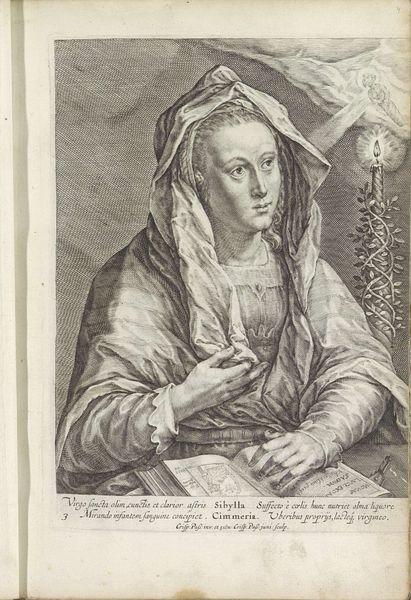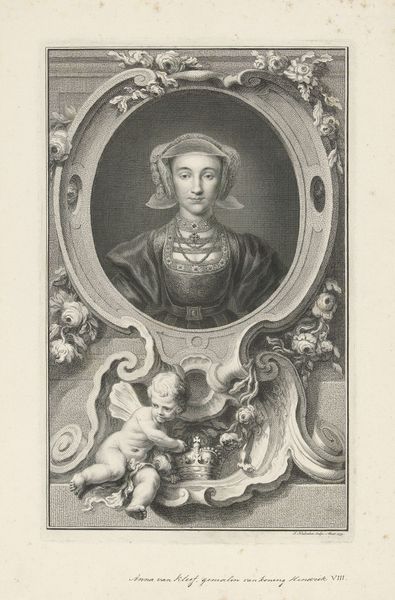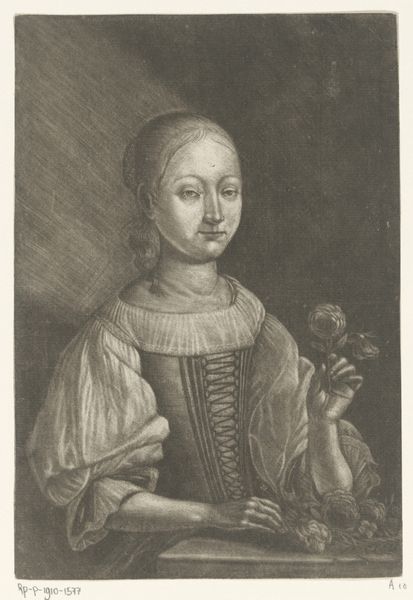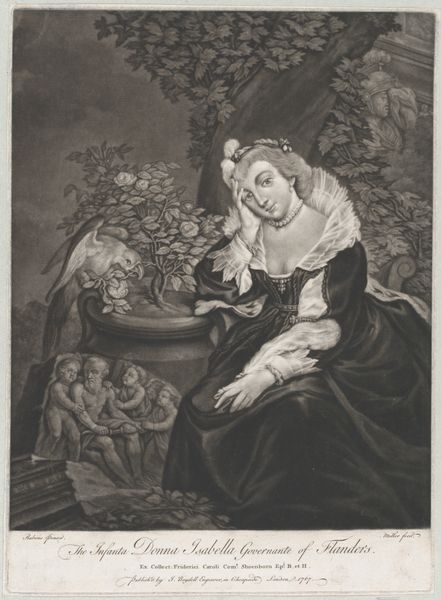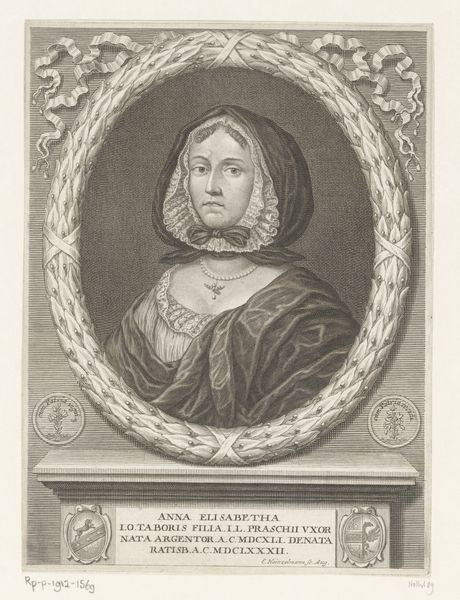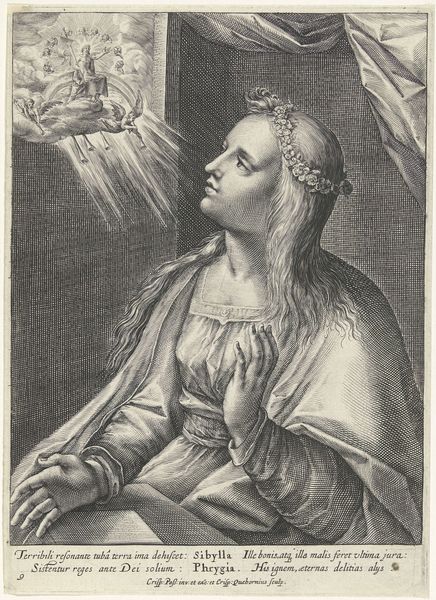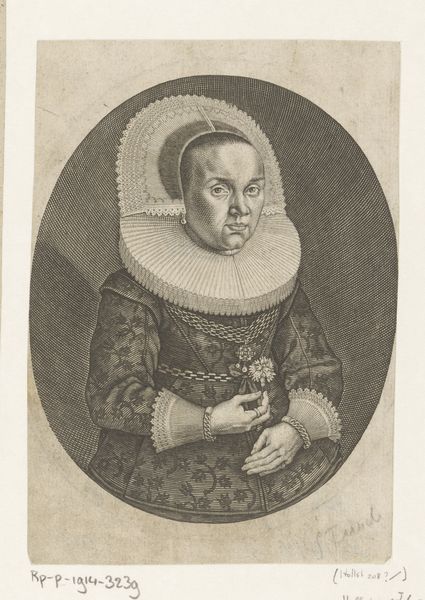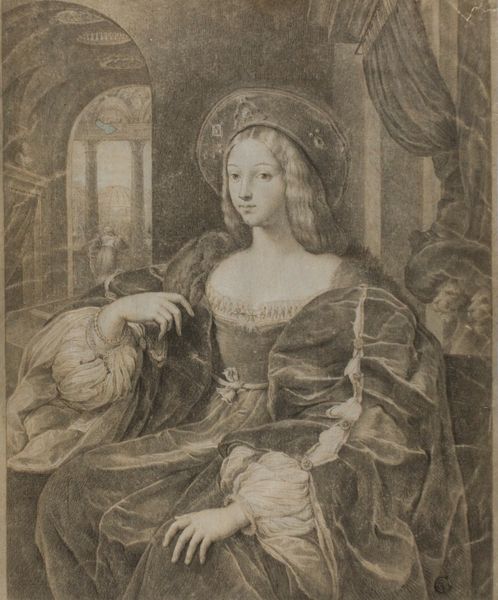
Portret van een onbekende biddende vrouw voorgesteld als Jacoba van Beieren 1753
0:00
0:00
print, intaglio, engraving
#
portrait
#
baroque
# print
#
intaglio
#
old engraving style
#
caricature
#
history-painting
#
engraving
Dimensions: height 369 mm, width 230 mm
Copyright: Rijks Museum: Open Domain
Curator: Looking at this rather intricate engraving, one finds "Portret van een onbekende biddende vrouw voorgesteld als Jacoba van Beieren"—"Portrait of an Unknown Woman Praying, Represented as Jacoba of Bavaria". It's a work dating back to 1753, crafted by Jacob Folkema and is currently held at the Rijksmuseum. What's your initial impression? Editor: It strikes me as a somber piece. The grayscale palette and the woman's downcast gaze create a contemplative, almost mournful mood. Curator: The artist certainly leaned into the Baroque aesthetic, but with a somewhat revisionist lens, wouldn't you say? This work presents itself as historical but was produced much later. The subject is depicted as Jacoba van Beieren, an important historical figure, yet presented in this form nearly two centuries after her death. Editor: Absolutely. The symbols are compelling. A heart pierced by an arrow suggests heartache, possibly referencing Jacoba's tumultuous marriages. The doves could signify peace or perhaps lost love, a common enough symbol across time and cultures. Curator: The image functions as a historical reinterpretation—more about the 18th-century's understanding of her plight than a true depiction of Jacoba herself. The bottom portion features an apparent betrothal ceremony that attempts to distill complex political maneuvering into a relatable human narrative. The inclusion of what looks like a fortified city and sailing ship hint at wider contexts. Editor: So, even elements that appear as decorative or biographical flourishes carry cultural meaning? I agree, there's definitely a story about power, loss, and the weight of expectation being told through the selection of imagery. Curator: Exactly! Folkema used the intaglio process, giving it very fine detail but also imbuing it with the sensibility of its time, in part defining collective memory through portraiture and embedding political values and ideas through easily reproducible prints. Editor: So, we are left with a somewhat tragic figure framed not only by period fashions, but also by the expectations of subsequent generations? Curator: Precisely. What we see is less historical fact and more of an exercise in the shaping of historical memory through the visual arts. Editor: That’s helpful; it makes me see it in an entirely new light, now! Curator: And for me, I’m reminded how easily narratives of great women are easily romanticized as tragedies over time.
Comments
No comments
Be the first to comment and join the conversation on the ultimate creative platform.
